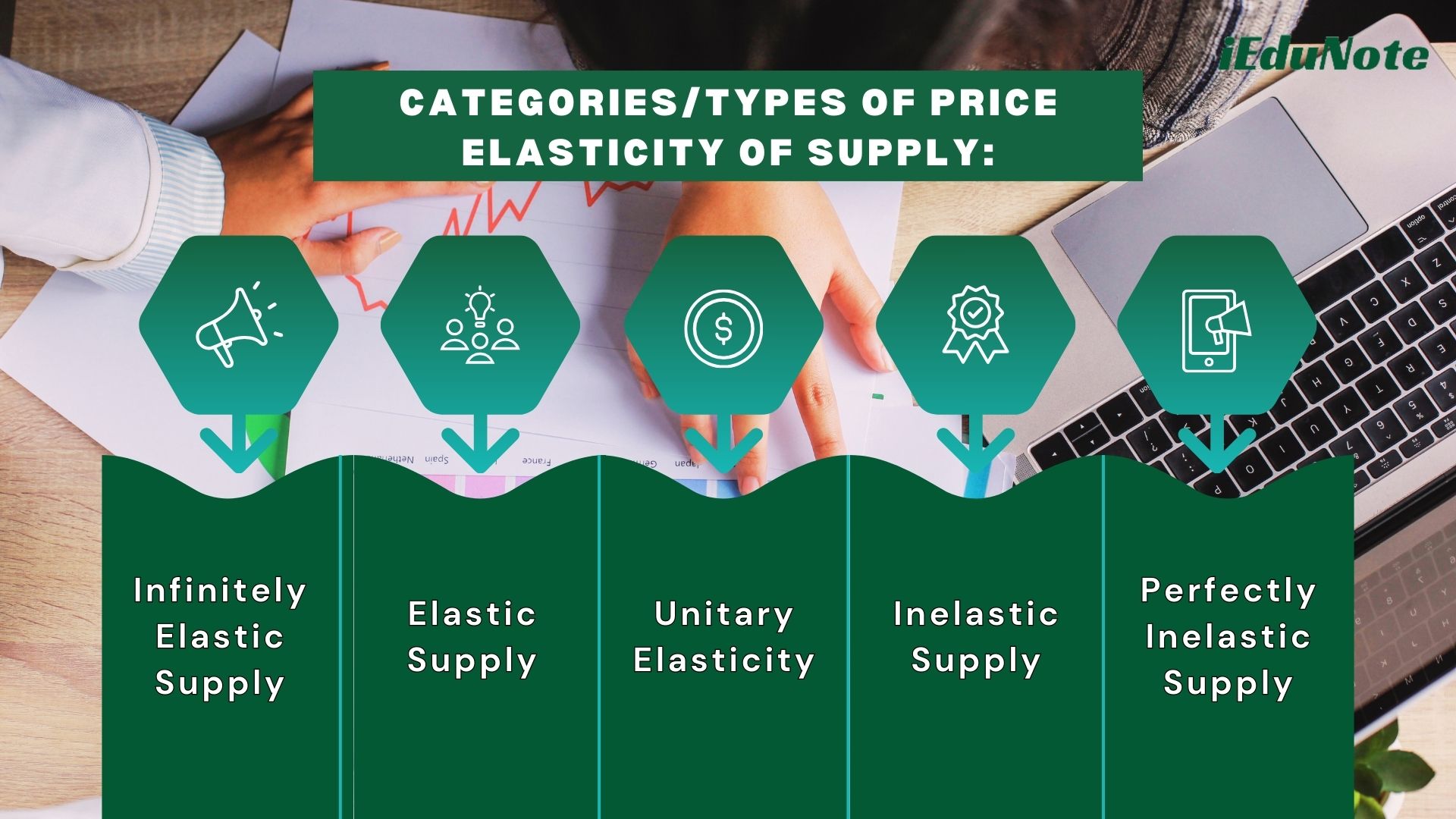Price elasticity of supply measures the degree of responsiveness of the supply of a product due to a change in the price of that product. Price elasticity of supply measures how responsive producers are to a change in the price of good. It is defined as a measure of the responsiveness of quantity supplied to change in price.
Measurement and Formula:

It is measured by dividing the percentage change in quantity supplied by the percentage change in price. Thus the Percentage Method formula is:
Es = Percentage Change in Quantity Supplied / Percentage Change in Price
It can also be written as?
Es= ( ^Qs/Qs ) / ( ^P / P )
Es = ( ^Qs / Qs ) * ( P / Qs )
Just like demand, supply can also be elastic or inelastic.
Elastic Supply:
The elasticity of supply represents the extent of change in supply in response to a change in price. If the amount supplied is highly responsive to a change in price, the supply is said to be elastic.
Inelastic Supply:
If the amount offered for sale is less affected by price change, then the supply is said to be inelastic.
Categories/Types of Price Elasticity of Supply:

Definition and Explanation
There are five degrees of price elasticity of supply:
Infinitely Elastic Supply:
When the amount supplied at the ruling price is infinite, we say the supply is infinitely elastic. An infinitely elastic supply curve is a horizontal straight line as is shown in Figure 7.1
{PICTURE: PAGE 126}
In Figure 7.1, when the price is OP, the producer supplies an infinite amount of goods if the price falls slightly below OP then nothing will be supplied by him.
Elastic Supply
When the percentage change in the amount of a good supplied is greater than the percentage change in price that generated it. The supply is then said to be elastic supply.
For example, if the price of oranges increases from $5 to Tk.6 and the quantity supplied rises from 150 to 600 oranges, the supply will be elastic.

In Figure 7.2, the SSZ supply curve is elastic, and the numerical value for elasticity is greater than l.
Unitary Elasticity
When the percentage change in the quantity supplied is exactly equal to the percentage change in price that evoked it, the supply is said to have elasticity equal to unity, and the elasticity of supply is equal to I.

In Figure 7.3, the SSZ supply curve drawn through the origin has unit elasticity of supply
Inelastic Supply
When the percentage change in the quantity supplied is less than the percentage change in the price that generated it, the supply is said to be inelastic. The inelasticity of supply is less than 1.

In Figure 7.4, the SSZ supply curve (which is steeper than the elastic supply curve) shows that with a significant change in price, the quantity offered for sale is not very much affected
Perfectly Inelastic Supply
In perfectly inelastic supply, the quantity supplied does not change as price changes. The elasticity of supply in other words is zero.
For example, if the price of a painting by an artist, who has died, rises from $10 thousand to $50 thousand, the supply of the painting cannot be increased. Figure 7.5 shows the perfectly inelastic supply.
{PICTURE: PAGE 129}
Determinants/Factors of Price Elasticity of Supply:

The main determinants/factors that determine the degree of price elasticity of supply are as under:
Time period
Time is the most significant factor which affects the elasticity of supply. If the price of a commodity rises and the producers have enough time to make adjustment in the level of output, the elasticity of supply will be more elastic. If the time period is short and the supply cannot be expanded after a price increase, the supply is relatively inelastic.
Ability to store the output
The goods that can be safely stored have a relatively elastic supply over the goods that are perishable and do not have storage facilities.
Factor mobility
If the factors of production can be easily moved from one use to another, it will affect the elasticity of supply. The higher the mobility of factors, the greater is the elasticity of supply of the good and vice versa.
Changes in marginal cost of production
If with the expansion of output, marginal cost increases and marginal return declines, the price elasticity of supply will be less elastic to that extent.
Excess supply
When there is excess capacity and the producer can increase output easily to take advantage of the rising prices, the supply is more elastic. In case the production is already up to the maximum from the existing resources, the rising prices will not affect supply in the short period. The supply will be more inelastic.
Availability of infrastructure facilities
If infrastructure facilities are available for expanding the output of a particular good in response to the rise in prices, the elasticity of supply will be relatively more elastic.
Agricultural or industrial products
In agriculture, time is required to increase output in response to the rise in the prices of goods. The supply of agricultural goods is fairly inelastic. As regards the supply of manufactured consumer goods, it is comparatively easy to increase production in a short period.